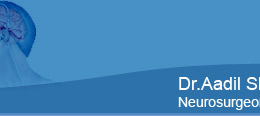UNDERSTANDING EPILEPSY
---- compiled by Ms Sonia Fernandez
Often, when the lay man sees a person experiencing an epileptic seizure he cringes either in fear or in helplessness and sometimes simply due to a lack of understanding of what exactly the person is undergoing. Therefore, there is an urgent and maybe even humane need to understand what epilepsy is all about.
What is epilepsy?
Epilepsy is a common neurological condition which consists of repetitive seizures, sometimes called fits, attacks or convulsions. These occur when some of the nerve cells in the brain become overactive and fire off uncontrolled random signals. It affects the brain and the nervous system. The temporal, frontal and occipital areas of the brain are affected. About one to two in every 200 people have epilepsy.
Classification
Epilepsies are classified in five ways:
- By their first cause (or etiology).
- By the observable manifestations of the seizures, known as semiology.
- By the location in the brain where the seizures originate.
- As a part of discrete, identifiable medical syndromes.
- By the event that triggers the seizures.
Types of seizures
There are more than 40 types of epileptic seizures.
1) Simple partial seizures
This is when one small part of the brain is affected. You may experience one or more symptoms including:
- a sense of "déjá vu" (the feeling of having done something before) or a "jamais vu" sensation (feeling like something familiar is new)
- flashbacks
- an intense feeling of fear or joy
- a funny taste or smell
- numbness or tingling
- strange movements
- seeing flashing lights or coloured shapes
2) Complex partial seizures
This type of seizure affects a larger part of the brain and often lasts longer than other types of epileptic seizure. If you have a complex partial seizure you may be only partly conscious and you may not recall what happened. Symptoms may include:
- lip smacking or chewing movements
- rubbing, stroking or fiddling with your hands
- looking from one side to another in a confused manner
- juddering movements
3) Generalised seizures
This is the type of seizure people most associate with epilepsy and is sometimes called ‘grand mal’ epilepsy. This affects all or most of the brain at once. If you have this type of seizure you may lose consciousness and not recall what has happened.
4) Tonic-clonic seizures
If you have a tonic-clonic seizure, you may:
- lose control and fall to the ground
- lose consciousness
- have stiff muscles or jerking (involuntary) movements
- stop breathing for a few seconds
- have a rigid jaw and may bite your mouth or tongue
- lose control of your bladder or bowel
- be confused and drowsy when coming around
5) Clonic seizures
You will twitch repeatedly but won't fall to the ground and won't go stiff in this type of seizure.
6) Tonic seizures
If you have a tonic seizure, you may go completely stiff and fall to the ground.
7) Atonic seizures
During an atonic seizure, the muscles in your body go floppy. If you have this type of seizure, you may fall forwards to the ground.
8) Myoclonic seizures
Your leg, arm, head or body will jerk in this type of seizure. This usually only happens in the morning.
9) Absence seizures
You may lose consciousness or more often just awareness, but this kind of seizure doesn't involve falling down or experiencing involuntary jerking movements. In fact, you may just look as if you are daydreaming. This is also called ‘petit mal’ epilepsy and isn't as obvious as a tonic-clonic seizure. This kind of seizure is most common in children and can continue into adulthood.
10) Secondary generalised seizures
Secondary generalised seizures start as a partial seizure (either simple or complex) and develop into a generalised seizure such as a tonic-clonic seizure.
11) Nocturnal seizures
These seizures occur when you are asleep and can happen during the day or at night.
Complications of epilepsy
Status epilepticus
Any seizure or group of seizures that lasts longer than 30 minutes, without recovery in between is called status epilepticus. If this occurs during a tonic-clonic seizure, it is a medical emergency.
SUDEP
Sudden unexpected death in epilepsy (SUDEP) is rare and can occur in a small number of individuals.
For the International Classification of Epileptic seizures log onto http://professionals.epilepsy.com/page/seizures_classified.html
Causes of epilepsy
The most common causes of epilepsy are:
- tumours and diseases in the brain
- genetic or inherited conditions (congenital abnormalities)
- alcohol, drugs or other potentially toxic substances
- head injuries
- infections which affect the brain such as meningitis or encephalitis
- lack of oxygen during birth
- cerebral thrombosis or haemorrhage (stroke)
Images of the nervous system, including the brain, can highlight the cause of epilepsy in two out of three people.
Epilepsy with a known cause is called symptomatic epilepsy. If there is a likely cause it's called cryptogenic and if there is no known cause it's called idiopathic.
Diagnosis of epilepsy
If you experience repeated seizures - whether once a year, or several times a day - you may have epilepsy. To diagnose epilepsy, your GP may refer you to a specialist for some tests. These can include an EEG (electroencephalogram), a brain scan which can be either a CT (computerised tomography) or an MRI (magnetic resonance imaging) scan and blood and urine tests.
Some people have one seizure and then never have another again. This can occur in one in 20 people. Small children can have a febrile convulsion if there is a sudden rise in their body temperature at the same time as a fit - this is not usually epilepsy.
Treatment of epilepsy
Self-help
Some people can identify the triggers of their seizures. Triggers can include:
- lack of sleep or being asleep
- missing meals
- alcohol or recreational drugs
- flashing or flickering lights such as strobe lighting - this is photosensitive epilepsy and affects less than one in 20 people with epilepsy
- stress or anxiety
- hormonal changes, for example at certain times of the menstrual cycle in women - this is called catamenial epilepsy
- tiredness
- illness
- constipation
- The transition between sleep and wakefulness (hypnogogia)
If you know what triggers a seizure, you may be able to find ways of avoiding the trigger to help to control your seizures. For example, if stress is a trigger you may benefit from relaxation and anti-stress exercises such as yoga. Keeping a diary to record your seizures can help to identify triggers.
Medicines
Anti-epileptic drugs - AEDs
Up to 70% of people with epilepsy could have their epilepsy controlled with anti-epileptic drugs (AEDs). AEDs aim to prevent seizures from happening, but don’t cure epilepsy. There are many kinds of AEDs, and the AED that someone takes will depend on the type of seizures they have.
There is no cure for epilepsy, but epilepsy medicines can control seizures in around seven out of 10 people.
These medicines may have side-effects such as drowsiness or a rash.
If you haven't had a seizure for two years, your specialist may suggest you gradually reduce the dose and stop taking your epilepsy medicines. This depends on the type of epilepsy you have and this may not be suitable for some people.
Medication should never be increased, lowered or stopped without first consulting the doctor. Suddenly stopping medication can cause seizures to start again or may make seizures worse.
Complementary therapies with a word of caution -
Aromatherapy, acupuncture and reflexology may help to reduce stress and anxiety, which can trigger epilepsy in some people. If you are taking any epilepsy medicines, check with your GP and pharmacist before taking or using any herbal remedy.
Some herbal remedies such as St John's wort may be helpful for depression but can interfere with epilepsy medicines. Evening primrose oil and star oil can trigger epilepsy in some people.
Diet
Some children with particular forms of epilepsy are recommended a ketogenic diet, which is high in fat and low in carbohydrates. This is individually calculated for each child by a dietician, so a certain amount of ketone bodies (produced when fat is burned) build up in the body. These appear to suppress seizures.
Vagus nerve stimulation
Vagus nerve stimulation (VNS) can reduce seizures in some people. This is when an electrical device, implanted in the chest, regularly stimulates a nerve in your neck called the vagus nerve. The vagus nerve then sends signals to areas of the brain. This treatment is only available if other medicines haven't helped and neurosurgery (brain surgery) isn't possible.
Surgery
You may be offered neurosurgery if your epilepsy is severe and is not controlled after trying several different epilepsy medicines. This can only take place if the epilepsy is associated with a specific area of your brain.
If someone has a seizure
If someone has a tonic-clonic seizure where they lose consciousness and have fits, remember to keep calm and check the time to monitor how long the seizure lasts. Protect them from injury by doing the following:
- ask onlookers to keep back
- loosen clothing or jewellery around their neck
- cushion their head
- move away anything that could cause injury
- don't put anything in their mouth
When the seizure stops, put the person on their side in the recovery position. After they re-gain consciousness, re-assure them and let them rest quietly in a safe place.
Don't try to move or restrain the person and don't give them anything to drink until they are fully conscious again. You should call an ambulance only if:
- it's the person's first seizure, the seizure lasts more than five minutes or longer than usual, (if you know how long the person's seizure usually lasts)
- the convulsions happen again without the person re-gaining consciousness
- the person injures themselves during the seizure
- they have trouble breathing afterwards
If someone has a seizure that doesn't involve the loss of consciousness:
- guide them away from any possible danger such as traffic if they are in the road
- talk to them calmly and re-assure them
- stay with them until they feel well again
Living with epilepsy
People with uncontrolled epilepsy may need to avoid certain activities or jobs where it could be dangerous to have a seizure - such as flying a plane, working at heights, riding a bicycle in busy traffic or swimming alone.
Whether or not you have a confirmed diagnosis of epilepsy, if you have a seizure or suspected seizure at any time you must stop driving. Ask your doctor for further advice.
If you stop taking epilepsy medicine, you can't drive while the medicine is being withdrawn or for six months afterwards.
Identity card
It's a good idea for you to carry a card or wear a bracelet which says that you have epilepsy. If your epilepsy isn't controlled, you may decide to tell your family, friends, teachers and colleagues about the help you need if you have a seizure, or ask them to seek advice.
Conclusion
In early days and to some extent even now, an epileptic person was unfairly labelled or ridiculed by society. Educating the lay man is essential to prevent causing further anguish to these patients and their families.
Famous personalities like Tony Greig, Jonty Rhodes, Neil Young and Florence Griffith Joyner have also suffered from epilepsy but rose to conquer it.
A little more understanding and sympathy on our parts can go a long way in helping these patients in dealing with their condition.


